There are quite a few types of crabs offered to hobbyists, and there are occasional hitchhiking crabs that make their way into our tanks without our approval, too. Some of these are suitable for reef aquariums and aren’t likely to bother other tank inhabitants, but many of them are not, and some are rather iffy. So, it’s important to know what crabs are okay and which aren’t. Unfortunately, while there are a few good ones, most of them are definitely off limits for reef aquarists, so I’ll give you some basic information about crabs in general and cover the more common types you’ll likely come across. Hopefully it will help you decide what to buy or not buy, or what to leave in or get out.
Before getting into the particulars, I do need to point out that not all crabs are really crabs. The name is applied to a variety of arthropods that bear common features, but some of these are just cousins of the “true” crabs, such as horseshoe crabs, which are actually more closely related to spiders and scorpions. True crabs are crustaceans, but horseshoes are chelicerates. Really, this is a taxonomic detail that isn’t very important when trying to determine which are good or bad though, as there are often greater differences between the overall characteristics of two true crabs than there is between some true crabs and their cousins. But, I figure I should point it out anyway.
Regardless, the next thing to note is that many crabs (true ones and the others) are omnivorous and will often eat just about anything. Some may eat a particular sort of preferred food as long as it is present, but even these can switch to something else in times of need. For example, a hypothetical crab that eats nuisance algae day in and day out may switch to eating your snails within minutes if it ever runs out of algae to eat. So, you’d have to make sure that it always had plenty of algae to eat if you planned on keeping your snails.
Likewise, as much as I hate to use words like “usually”, “typically”, “may”, etc., the fact of the matter is that the behavior of various crabs can often vary greatly from individual to individual, as well. There are many crabs that are safe with various other invertebrates and okay to keep in reef aquariums that can turn into a problem, yet some of those that are considered to be off limits may never bother anything at all as long as they’re provided with plenty of food. My point is, even if a crab is supposed to be reef-safe, you should still keep a watchful eye on it and see what it does for a while just to be sure.
Lastly, it’s also important to keep in mind that even very small crabs may feed on very small animals that you want to keep alive in your aquarium. This is of special importance to hobbyists that have systems set up with quality live rock and/or deep sand beds full of tiny organisms like worms and such, which can become the staple of choice for a juvenile predatory crab. If you have such a system, don’t make the mistake of thinking that a small uninvited crab is nothing to worry about due to its size. Over time the damage to the populations of other like-size things can be serious.
With that said, now I’ll get to the specifics:
Mithrax Crabs: Mithrax spp. and Mithraculus spp.
Mithrax crabs are one of the most commonly available types of crab, which are quite popular due to their algae-eating habits, especially the green emerald crab Mithraculus sculptus. They can be quite helpful, as they’ll rove around, out of sight for the most part, eating unwanted Valonia and Ventricaria (bubble algae). These crabs will also eat many other sorts of algae, but they’re still omnivores nonetheless. So, make sure they get plenty of green food or they may decide to munch on something else. In addition, while most stay relatively small (those in the genus Mithraculus) there are some that will grow to much larger sizes (those in the genus Mithrax) and may need to be removed at some point, as they are more likely to pose a threat to other invertebrates and may even catch and eat small fishes.
Sally Lightfoot Crabs: Percnon gibbesi
Sally Lightfoots, which are also called spray crabs, are also regularly available. They’re also primarily algae eaters in aquariums, and have been used by hobbyists for years to help keep things cleaned up. But, again, they’ll eat meat if the opportunity/need arises. They may go for other small invertebrates, and big ones may even try for small fishes, too. Years ago I heard of one that would perch on top of a tall rock and leap out at small fishes that swam close by! This is not a common behavior, though. Regardless, they’ll be fine in fish-only aquariums if the fishes are big enough to take care of themselves, but you’d be taking a chance putting one in an aquarium with other small invertebrates.
Arrow Crabs: Stenorhynchus spp.
Arrow crabs are also regularly seen for sale, most commonly Stenorhynchus seticornis, which is another of the most popular species around. At first glance they appear to be some sort of long-legged spider, but they have a distinctive snout, called a rostrum, that projects from the front of their shell. They’re carnivores that will eat any sorts of meaty foods including other small invertebrates, especially bristle worms and feather duster worms, and they’ve been known to go after small sleeping fishes when given the chance, as well. So, they’re fine in fish aquariums, if the fishes are big enough to take care of themselves, but again, I’d be wary of putting one in an aquarium with other small invertebrates.
Decorator Crabs: Stenocionops spp., Camposcia spp. and others
There are quite a few decorator crabs, all of which are recognized by their habits of taking small bits of algae, sponge, tunicates, and/or various soft coral polyps and sticking them to their own shells in order to make an effective coat of living camouflage. Some are omnivores, but the majority seems to be carnivores, so these aren’t recommended in reef tanks, either. To stay decorated, they need a supply of things to decorate themselves with, but if you put them in a reef aquarium they may also cut up and even eat from the things they need, too. Some species also have very specific diets and will likely starve in captivity, so I do not recommend these for most folks.
Porcelain Crabs: Petrolisthes spp.
These are anomurans, rather than true crabs, and aren’t seen for sale that often. However, they’re found in live rock from time to time, especially in aquacultured Florida rock. These are quite unique, as they’re filter feeders that use special appendages to capture plankton. They have what appear to be little fans that they sweep through the water over and over, and pass whatever they catch to their mouth. They do have relatively large, flattened claws for their small size too, but these are apparently just for show and aren’t anything to be concerned with. They’ll eat some fish foods if offered, but they won’t bother anyone else. So, they’re fine for any aquarium setting.
Anemone Crabs: Neopetrolisthes maculata and ohshimai
These two species are also anomurans, and are also filter feeders that look a lot like their porcelain crab cousins. But, these two species have distinctive colors, being white with reddish-brown to almost black spots and speckles. As the name implies, they also live in close association with anemones, as they don’t get stung by them and may spend the better part of their life on one, crawling about the base and even through the tentacles. You may see one (or a mated pair) for sale with or without an anemone, but keep in mind that if they come with an anemone, the anemone will probably be much more difficult to keep alive than the crabs. If they don’t come with an anemone, you’ll need to provide one for them. Otherwise, you’ll likely never see them.
They’ll eat plankton if available, but they will also eat some fish foods if offered. They won’t bother anyone else, though. So, they’re fine for any aquarium setting as long as you can provide them with an appropriate host anemone. The carpet anemones (Stichodactyla spp.) work well, and are typically relatively hardy as far as anemones go.
Fiddler Crabs: Uca spp.
Every once in a while I come across some fiddler crabs for sale, but these are unsuitable for typical aquariums. The reason is that they normally live in the intertidal zone, where they dig burrows and spend much of their time out of water. The males have a greatly enlarged claw, which they use to attract mates and threaten potential male competitors, and all are omnivores that will eat meaty foods and algae. Because they spend much of their time out of water, these should only be kept in a specially designed aquarium that mimics the intertidal zone with a deep and soft substrate.
Stone Crabs: many genera and species
I doubt you’ll see any of these for sale, but hitchhiking juveniles are found in live rock at times. These get big though, and can be outright destructive, eliminating all sorts of creatures in no time if given a chance. They’re recognized by having exceptionally large, heavy claws that can easily crush the shells of clams and snails. And they do. They also have a bad habit of knocking over and intentionally rearranging rocks over and over, digging burrows all over the place, and being an all around real nuisance. None of them are suitable for reef aquariums.
Shame face/Box Crabs: Calappa spp. and Hepatus spp.
While I don’t recall ever seeing a stone crab for sale, I have seen small shame face/box crabs at shops from time to time. However, like the stone crabs, these will also get big. They also have large claws purpose built for breaking open shells, and can break open large snail shells in something of a can opener fashion. They’ll also bury themselves in sediments and stir everything up all the time, and are big enough to bowl over rocks and rearrange things, too. So, these aren’t suitable for reef aquariums, either.
Coral Crabs: Tetralia spp., Trapezia spp. and others
There are a number of small crabs that spend their lives in pairs, nestled between the branches of stony corals. Those in the genus Tetralia are most often found in Acropora colonies, while those of the genus Trapezia are most often found in Pocillopora colonies, and both are sometimes imported with these corals. So, you may get one unintentionally when you buy one of these corals, but most are nothing to worry about and are interesting and often colorful, too. While they are carnivores that will eat small meaty bits, they’re thought to dine on the mucus produced by the corals that they live in too, but are commensal creatures that don’t do any actual harm to the corals.
Be aware that there are a few imposters that will feed on coral tissue, though. So, if you find a crab living in a coral and can’t positively identify it, be sure to watch its activities. If it appears to be eating the coral’s flesh, it should be removed immediately.
Small hermit Crabs: Many genera and species
Small-sized hermits, which are also anomurans, are regularly available at stores. The blue-legged hermit (Clibanarius tricolor) and the slightly larger scarlet hermit (Paguristes cadenati) being good examples. Many small hermits are very desirable, as they make great algae eaters that don’t cause problems, and they’re small enough that they don’t knock things over or disturb much of anything when they crawl all over rocks and such. However, there are some small ones that may be carnivores, which can kill other small invertebrates. So, if you can’t positively ID a small hermit and make sure it’s okay, be sure to keep a close watch on them. Do note that all of these will scavenge on meat if the opportunity arises though, so don’t be surprised if you ever find them dining on a deceased fish, snail, etc.
Big hermit Crabs: Many genera and species
Many hermits that are commonly seen for sale at stores can get much larger and much fancier in appearance, some being very beautiful animals. But don’t let their good looks fool you. They’re essentially all omnivores that can be a threat to many other invertebrates and small fishes, and are rarely suitable for reef aquarium life. Even those that are more mild-mannered may get large enough to knock things over/down with their shells when they crawl around, as well, as they tend to be a bit clumsy.
However, for fish-aquarium owners I highly recommend them and have kept hermits in just about every fish-aquarium I’ve ever set up. If there’s nothing for them to do damage to, they make great pets and kids are especially fond of them. While the vast majority of crabs tend to keep a low profile, staying out of sight much of the time, hermits are much more likely to crawl about in the open and give you something to watch. They’re good at cleaning up fish food leftovers, too.
Horseshoe Crabs: Limulus polyphemus
These aren’t true crabs either, being merostomates, and while you might see small ones for sale from time to time, they probably shouldn’t be. These can easily grow to well over a foot in length, and spend most all of their time buried in sediments. They’re omnivorous, but eat primarily clams and worms which they find while digging around in the substrate, so in an aquarium they would require a lot of space, a very deep sand bed, and plenty of meaty food. Even juveniles can be harmful in reef aquariums with a deep sand bed, as they’ll eventually clear it of any beneficial worms and such. The bottom line is that these really aren’t suitable for reef aquariums, or typical non-reef aquariums, either.
Other Crabs
Well, there are plenty of others that show up here and there. Sometimes for sale, and sometimes not. In most cases, if you should happen to find one that you can’t identify, the best thing to do is figure out how to get it out. I’d think it is better to not take chances when in doubt. Of course, if you have a fish-aquarium full of fishes that are big enough to take care of themselves, there shouldn’t be any problem, but everyone else should take action to protect their other critters.
References
- Calfo, A. and R. Fenner. 2003. The Natural Marine Aquarium Series: Reef Invertebrates, An Essential Guide to Selection, Care, and Compatibility. Reading Trees, Monroeville, PA. 398pp.
- Fossa, S. and A. Nilsen. 2000. The Modern Coral Reef Aquarium, Volume 3. Birgit Schmettkamp Velag, Bornheim, Germany. 448pp.
- Rupert, E. E. and R. D. Barnes. 1994. Invertebrate Zoology, 6th ed. Saunders College Publishing, Fort Worth, TX. 1140pp.

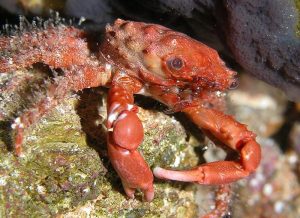
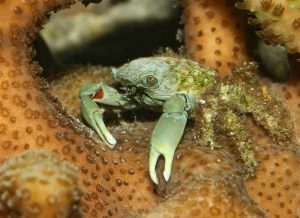
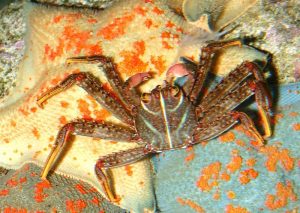
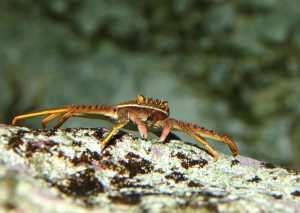


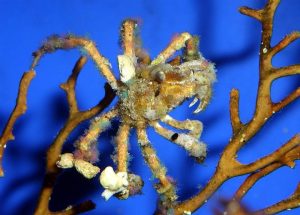
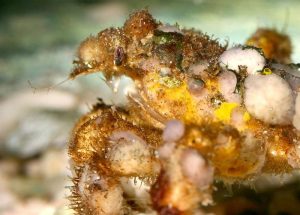



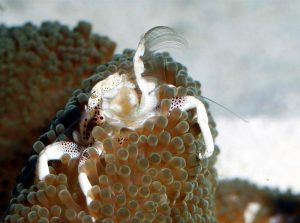
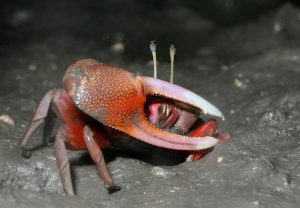
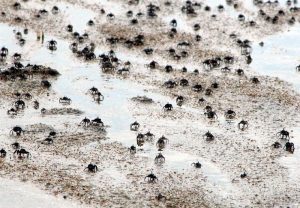
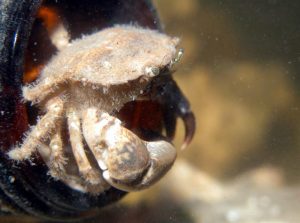
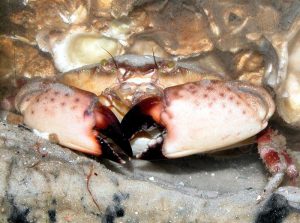
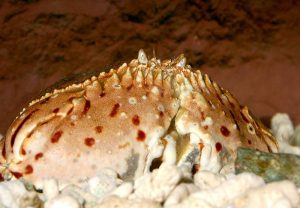
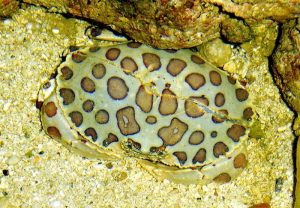




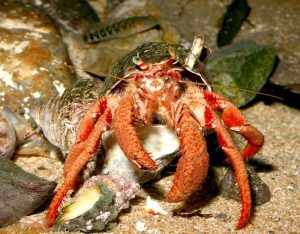
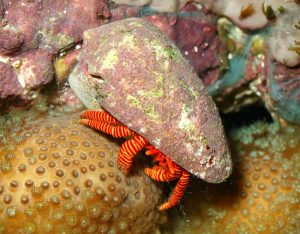



0 Comments